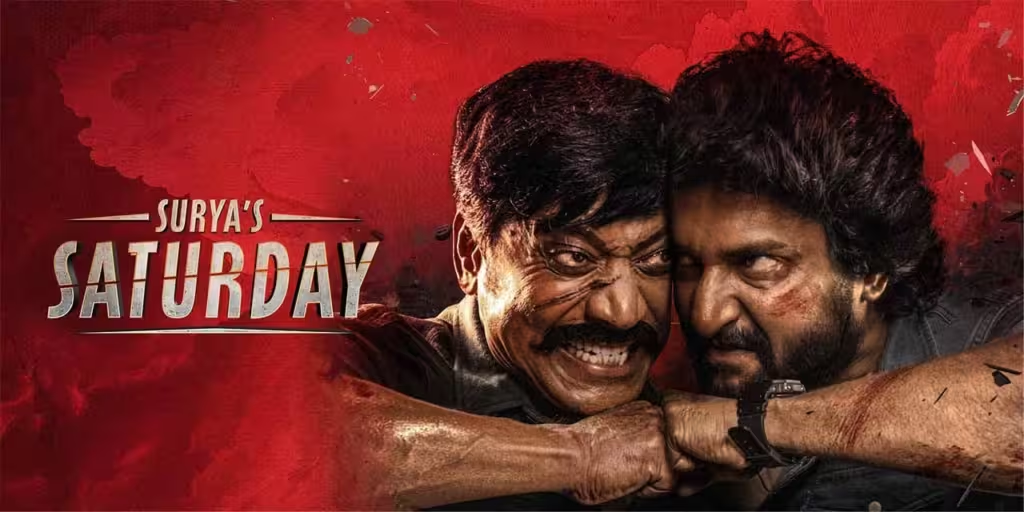
By happenstance, the last three movies I’ve seen theatrically have all been Indian films, and that seems like something worth celebrating and sharing.
It seems only a few years ago that Indian films were often collectively and incorrectly pigeonholed as “Bollywood”; in more recent times American viewers seem to have caught up to the fact that the Indian film industries (plural) have carved out a vast and rich identity with terrific films across different subcultures, native languages, and genres.
All three of my screenings were well attended, but in each I was the only non-Indian audience member, highlighting an opportunity to encourage American audiences to take chances on this exciting and rewarding pocket of world cinema.
I’m a novice in this arena and unfamiliar with these stars and filmmakers and their work, but here’s a look at what I’ve viewed lately. All three of these films are currently playing in US theaters and have at least one thing in common: absolute banger soundtracks.
Surya’s Saturday (Saripodhaa Sanivaaram)
A high concept Telugu-language action thriller that’s easily the highlight of this roundup, Surya’s Saturday focuses on a protagonist who has a unique way of dealing with his anger issues. As a promise to his dying mother, a young Suyra (Nani) agreed to only act on his rage on Saturdays; a mechanism to force him to calm himself and avoid behaving too rashly, allowing minor offenses to be forgiven and forgotten. But if, on Saturdays, he still holds a grievance, he may act on his anger.

As an adult, Surya has ardently kept his promise, and with such a fervor that he follow his practice with a religious focus. And over he years, his anger has matured into more of a righteous indignation. Recording any offenses in a notebook, he reads over his grievances each Saturday and then acts on those that still anger him – often ending in a violent beatdown for the offender. His habit of dutifully righting injustices on Saturdays alerts police and criminals alike to the existence of a “Saturday vigilante”, his identity for the most part unknown.
But Surya’s rigid devotion to his practice causes stress and danger for his family, puts the strain of secrecy on his relationship with Charulathe (Priyanka Mohan), a police officer with whom he has fallen in love, and targets him as a threat to both ruthless gangsters and an outrageously corrupt police captain who terrorizes a local slum (and who happens to be his girlfriend’s boss).

This is a big crowd-pleaser of a movie, with likeable characters, a charming romance, enjoyable action and fighting sequences, interesting villains, some fun humor (especially as channeled through Surya’s dad, who has has own weekly routine in response to Surya’s), and a unique concept that invites some thought, framed in a plot that could almost play as a western. And of course an incredible hard-driving score. My audience was vocal and engaged, and clearly having a blast.
Surya’s Saturday is currently wrapping up its theatrical run in the US, so catch it if you can, while you can. A streaming date hasn’t been announced, but the film’s credits highlight Netflix as a distribution partner so it seems likely to hit that platform in the future – but with different international markets that’s not a guarantee. If you’re lucky enough to have this playing near you, I definitely advise to seek it out immediately.
Update: It’s on Netflix now. Check it out!
A.R.M. (Ajayante Randam Moshanam)
Ajayan (Tovino Thomas) is a clever and morally upstanding electrician who has taught himself a valuable trade. He’s also distinguished himself as a formidable fighter and practitioner of the martial art Kalaripayattu. But to most in his village he’s dismissed only as an untrustworthy hoodlum, having come from an infamous family which has yielded two prior generations of thieves. Unfortunately for Ajayan, there actually is a thief in the village, causing him great inconvenience as the #1 suspect.
Ajayan carries on a secret romance with Lakshmi, his childhood best friend who happens to be the daughter of the richest guy in town. Their forbidden love would never be approved by the old tyrant, who is committed to the concept of superior (and inferior) castes.

Coerced by gangsters who wish to steal the valuable object for themselves, Ajayan is forced to search for the village’s lost sacred lamp, a religious relic crafted from a fallen asteroid and considered a gift from the heavens – and with whom his family of thieves has a long and storied history.
Partially told in a nonlinear format, the film recounts the multi-generational stories of Ajayan and his grandfather and great-grandfather (also played by Thomas), piecing together their histories and parallels in their lives, and unlocking past secrets that play on the current story.

Can Ajayan find the artifact, restore his family’s honor, and live happily ever after with the woman he loves? You can probably anticipate the answer but it sure is a fun adventure to watch.
The film, which is natively in the Malayalam language, can be watched in 3D screenings as well as 2D, and the 3D deserves a review of its own. It’s very obviously a post-conversion, by which I mean it’s by far the jankiest conversion I’ve ever seen – you can really see the seams of the approach. Objects and edges flit and out of depth, especially in motion. Finer details like tree limbs and hair are blobs. But it’s also an approach that shapes the experience, clearly going for “in your face” impact rather than realism; characters’ faces in particular loom large and protrude garishly. I kind of respect the boldness of it. The 3D does tend to add some fun character to action sequences, even if at times (and arguably because) it looks bonkers. But if you want to appreciate the film more purely on its merits, I’d avoid the distraction of the 3D version.
Kalinga
On paper, the Telugu horror thriller Kalinga sounds like it would be right up my alley, but slippery storytelling execution make it a rougher watch than the two other films above. There’s actually a somewhat compelling narrative here, but the film’s unevenness – combining very disparate halves of musical romance and surreal horror – didn’t quite gel for me.

Almost immediately, the film frustrated me with its introductory narration, a history of gods and monsters illustrated through what appear to be AI-generated images. It was a rough start that would be hard to overcome.
The rural village of Kalinga borders a vast forest, but the villages rarely venture there – it’s known to be a cursed land. On the rare occasion when they do cross the threshold – to offer a sacrifice, for example – they only stay for a couple of minutes to avoid invoking the wrath of the unknown evil within.
A young man named Lingaa (Dhruva Vahyu), eager to marry his sweetheart, seeks the release of his generational land held by the Village Head (Adukalam Naren), a ruthless and gangster-like landlord who’s not above murdering uppity peasants to retain or increase his wealth. Seeing the young man’s resolve, the wily Village Head offers Lingaa twice as much land as what he’s owed – but in the cursed area of the forest. It’s clearly the only offer on the table.

Undeterred, Lingaa agrees to the terms and grabs his reluctant best pal, and the pair enter the forbidden forest to survey his new property and face the ancient evil within. The film takes some stylistic inspiration from The Evil Dead, utilizing a similar first person camera and establishing a foreboding tone to the environs.
The film picks up considerably in the second half as the duo explore the forest and its caverns and encounter the monster that makes its home there, but it feels a bit labored in getting to this point: The film’s first half focuses on the challenges of romance and real estate (complete with musical numbers), oddly sprinkled with some establishing horror bits. An intermission splits the halves, demonstrating that the filmmakers clearly understood and designed the 2-part narrative structure, even if it felt a little strange to me.
I really enjoyed the film’s eventual descent into ancient rural horror, but the unevenness of the approach and distasteful AI sequences make it tough to recommend – it was certainly the weakest of this particular trio.
A/V Out



